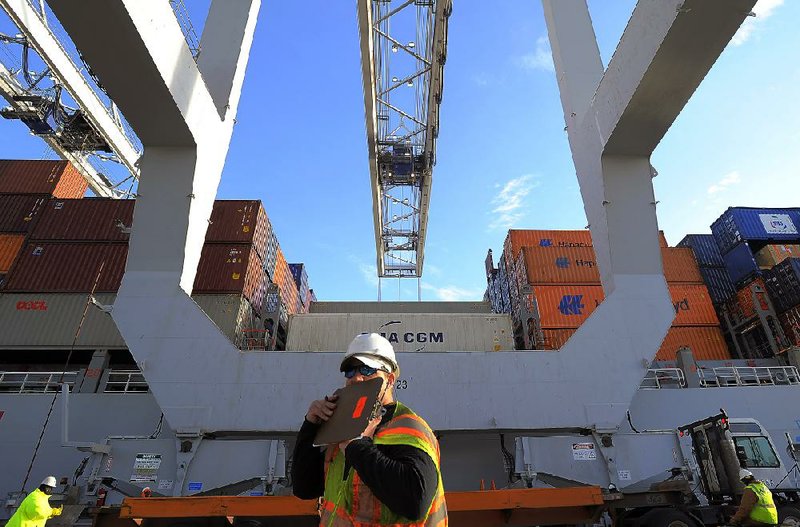WASHINGTON - U.S. wholesale businesses in January suffered their steepest sales drop in nearly five years, but they continued to increase their stockpiles, a suggestion to analysts that companies expect the economy will rebound from an abrupt winter slowdown.
Wholesalers increased stockpiles 0.6 percent in January from December, the Commerce Department said Tuesday. Rising stockpiles boost economic growth because they reflect increased production at factories, a sign that wholesalers anticipate a stronger economy.
But sales tumbled 1.9 percent in January. That’s the largest decline since March 2009, when the economy was in recession.
In a separate report Tuesday, the Labor Department said U.S. employers advertised slightly more jobs in January than in December, a sign that hiring should remain steady in coming months.
Heavy snowfall and bitter cold struck much of the United States in January, causing shoppers to stay at home and retail sales to fall 0.4 percent that month. Major store chains have reduced their profit outlooks, including Wal-Mart Stores Inc., the nation’s largest retailer.
Still, wholesale businesses have seen sales rise 3.9 percent year-over-year.
The government tracks inventories held by wholesalers, manufacturers and retailers. Areport covering all inventory levels will be released Thursday.
A major jump in stockpiles during the July-September quarter last year contributed two-fifths of that period’s surprisingly robust 4.1 percent annual economic growth rate. But the pace of stockpiling slowed in the final three months of 2013, contributing just 0.14 percentage point to the 2.4 percent annual growth rate. The U.S. economy grew 1.9 percent overall last year.
Greater stockpiling indicates that businesses expect consumers to buy more goods, a sign of an improving economy. Inventories for automobiles, metals, hardware and machinery all increased in January.
But substantial increases can also pose risks for growth, since the additional products in stores and on warehouse shelves will sit unused if consumers don’t spend more.Wholesaler clothing and furniture sales both declined in January.
Employers posted 3.9 million job openings, up 1.5 percent from December, the report from the Labor Department said Tuesday. That is still below November’s nearly six-year high of 4.1 million, the first month that openings topped 4 million since March 2008.
There are about 2.6 unemployed Americans, on average, for each open job, the report shows. That’s close to the ratio of 2-to-1 that is typical of healthier economies. The ratio of unemployed people to available jobs reached a record 6.7 in July 2009, just after the recession ended.
The job market may be emerging from a winter slump. Employers added 175,000 jobs in February, the government said last week. That was much higher than in December and January,when cold weather lowered job growth.
And a separate report by Manpower Group, a staffing company, found that U.S. employers are more optimistic about hiring this spring. Of companies surveyed, 19 percent said they planned to add jobs in the April-June quarter, the most since last fall.
Last week’s employment report showed 175,000 net job gains in February. That’s the number of people hired minus those who were laid off, quit or retired.
Tuesday’s government report, known as the Job Openings and Labor Turnover survey, provides more details. It shows the overall number of people hired each month, rather than just the net gain. It also includes data on the number of people quitting or being laid off.
“Hiring was delayed during the winter due to bad weather, and I think we’ve started to see some catchup already in the February figures,” said Ryan Wang, an economist at HSBC Securities USA Inc. in New York, speaking before the report. “We’ll continue to see gradual improvement in measures like quit rates and hiring rates.” Information for this article was contributed by Josh Boak and Christopher S. Rugaber of The Associated Press and Jeanna Smialek of Bloomberg News.
Business, Pages 25 on 03/12/2014
